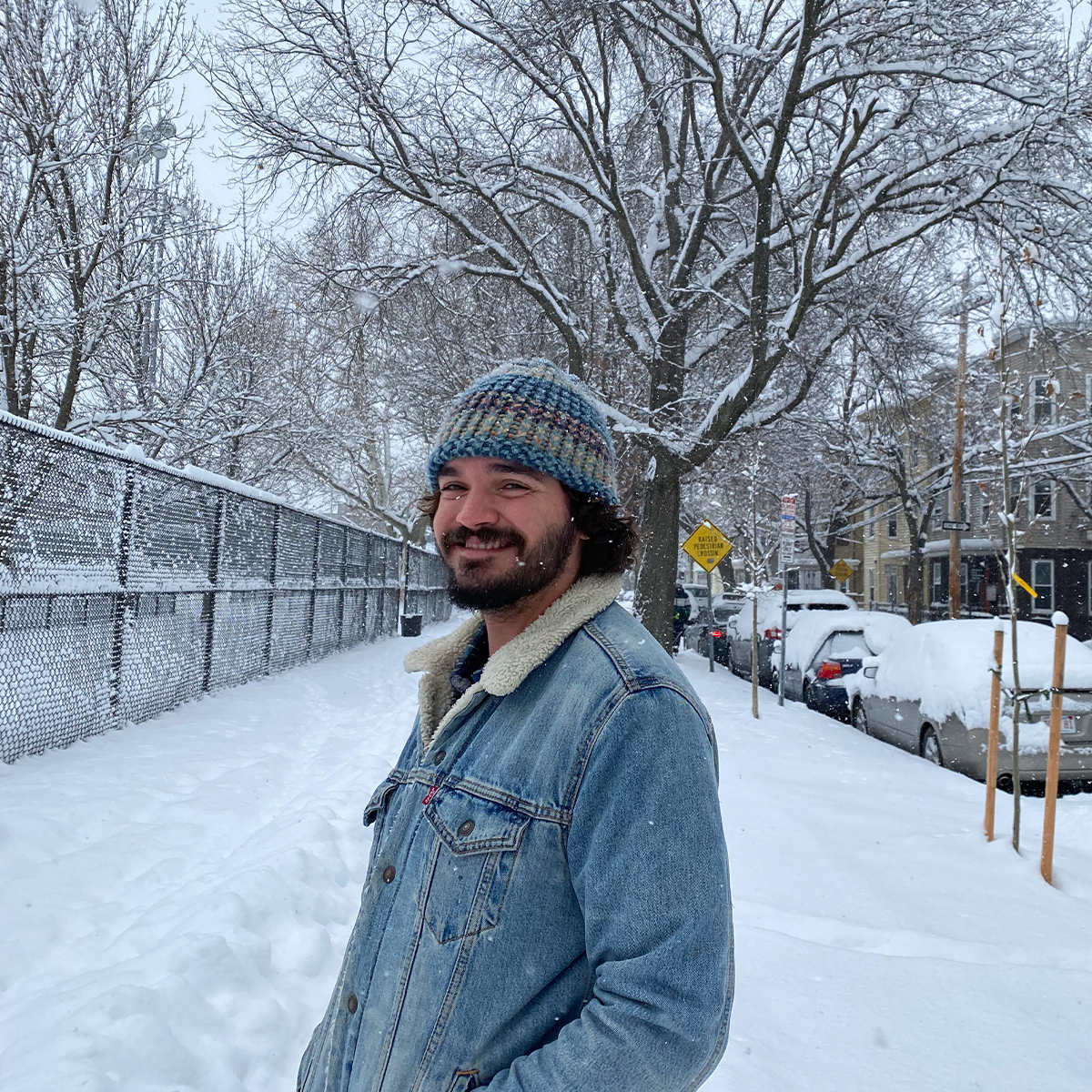
Observations from the 2024 Geophysical Plasma Expedition
Chasing the aurora from Cambridge, MA to Fairbanks, AK
We stand spread across a frozen hilltop, gazing North at a pale green band low above the horizon. The landscape around us is blanketed in unbroken snow, appearing almost extraterrestrial in the flat light of the waxing crescent moon. We fidget to stay warm and murmur to one another about the slight undulations of the band as it gradually migrates southward and grows in our field of view. It is our 8th day in Fairbanks and we have seen this before. The aurora borealis typically forms bands stretching from the east to the west, and appears first on the northern horizon, drifts south as the night wears on and eventually recedes to the north. The Earth rotates beneath the geomagnetic feature known as the auroral oval, which is fixed in its orientation relative to the Sun, producing the apparent motion of the aurora from north to south. Our murmurs grow into exclamations as the once-distant arc approaches our local zenith and the undulations grow more drastic. This is new. All of a sudden, the once quiet arc coils into an enormous spiraling ribbon before erupting into a turbulent cascade of eddies and whorls. The color intensifies from a near gray to a bright, pale green painted with a stroke of violet along the top fringe. The long hoped-for geomagnetic substorm has broken – and as we revel in the cold beauty of the dancing lights, our detectors silently collect data from this most mysterious geophysical plasma.
Three months earlier, the idea of an aurora-chasing expedition was nothing more than an idle daydream triggered by learning that the solar activity cycle was attaining its apex. Over the next month, I pitched it to seven of my peers – fellow Ph.D. students with a synergy of knowledge and skills to make meaningful scientific measurements of the legendary lights. We formed a plan: construct an integrated all-sky camera + magnetometer system to make correlated measurements of the fluctuations of the optical emissions and magnetic perturbation associated with the aurora, cobble a mobile spectrometer unit from parts salvaged from the decommissioned Alcator C-MOD tokamak, and build a very low frequency radio receiver to listen for geomagnetic radio emissions. The murky idea now crystalized into a clear research plan, I found ample support from Dennis Whyte, Director of the Plasma Science and Fusion Center, and John Rice, my thesis advisor. The first Geophysical Plasma Observation Expedition was underway.
Aurora over the GPOE2024 team at Harding Lake by J.L. Ball. From left to right: Jared Rivera, Skylar Dannhoff, Tucker Evans, Shon Mackie, Jack Heinzel, Scott Moroch, Jacob van de Lindt, John L. Ball.
In the next two months leading up to IAP, we put our detectors together and set off for central Alaska. We adopt a nocturnal lifestyle for two weeks to watch the skies for the aurora. When the skies are clear we observe some auroral form nearly every night, but clouds often occlude our view. The aurora forms about 60 miles above sea level, far higher than any cloud. On cloudy nights we hunker down to play games and watch movies, glad for the reprieve from a night of frigid observation but eager for the prospect of a clear night’s observation tomorrow. We visit the University of Alaska Fairbanks and are invited by Professor Don Hampton, Chief Scientist of Poker Flat Research Range, to use the science observation center at Poker Flat, a sounding rocket launch facility in the mountains North of Fairbanks. Thanks to Prof. Hampton’s generous hospitality, we have a warm building in which to wait for the aurora to appear far from the polluting light of civilization. Under the dark of midnight, the observation center is at first eerie in its emptiness; but the feelings of unease melt away nearly as quickly as the ice from my moustache as we sip hot coffee and play cards to pass the time. At Poker Flat, we observe the most spectacular auroral displays of our brief expedition.
Observers at Poker Flat Research Range by J.L. Ball. Active aurora pulsates overhead while Skylar, Jacob, and Scott set up a large loop antenna in the trees by the red light of their headlamps while Tucker, Jared and I watch the dance of light and magnetism, enthralled.
As the plane lifts off from Fairbanks, I find myself replaying the nights on the hilltop – the dancing lights and twinkling stars in the sky above us, our shouts of awe piercing the stark silence of night, the periodic blink of light from our detectors at work. What began as a half-serious daydream became one of the most memorable experiences of my Ph.D., built not from a formal program, but from a shared sense of curiosity and drive. That, I’ve come to realize, is part of what makes MIT so special: the freedom to chase an idea to the edge of the world, and the support to make it real. Before long, we will soon be already dreaming up the next expedition. But for now, I carry with me a deep gratitude for the aurora, for the team, and for the rare privilege of turning wonder into discovery.
FOOTNOTE: For more info and pictures, check out our website (we went back this year!).
Share this post:
